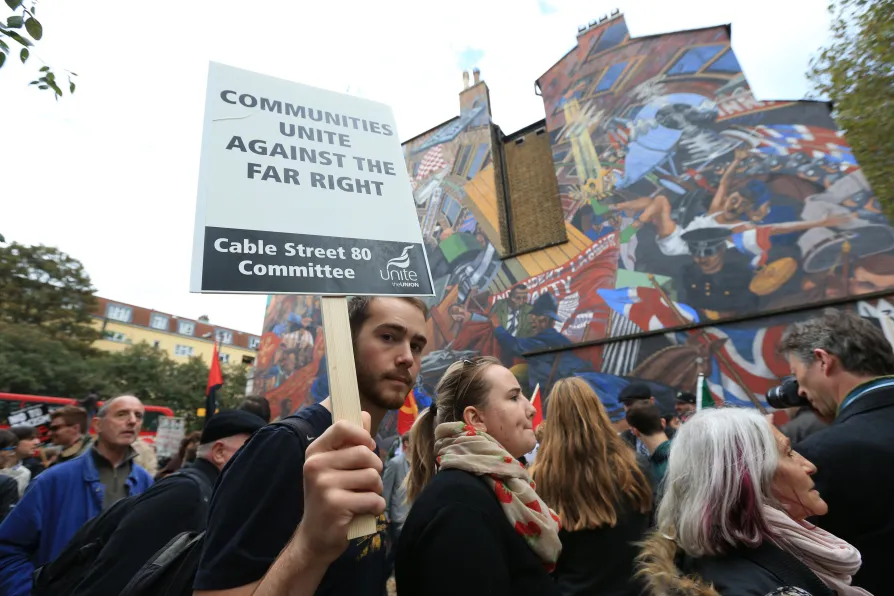
 Demonstrators pass by a mural on Cable Street in the East End of London which commemorates the Battle of Cable Street, October 9, 2016
Demonstrators pass by a mural on Cable Street in the East End of London which commemorates the Battle of Cable Street, October 9, 2016
THE Battle of Cable Street, the anniversary of which falls tomorrow, is much mythologised.
The East Enders who barred the way to Britain’s home-grown fascists as they attempted to intimidate the Jewish community to the east of the city are annually marked by events which recall the anti-fascists’ unity, clarity of purpose and organisational skills.
By 1936 Britain’s national government, originally led by the turncoat ex-Labour leader Ramsay McDonald and comprising Tory and Liberal parties, pursued an austerity policy designed to make the working class pay for the manifest failures of the capitalist system.
The Tory Stanley Baldwin succeeded the Labour traitor and the year start saw the death of George V, with his eldest son, the fascist-minded Edward VIII, succeeding to the throne before his subsequent abdication resulting from pressures within the Establishment, the contours of which are still barely known.
The new king, before abdicating, survived a ludicrously botched assassination attempt when a former spy for the fascist Italian regime turned British Security Service informant aimed a pistol at the royal cortege before being overcome. The assassin, a former gun-runner and fraudster got off with a mysteriously light 12-month sentence.
The ex-king and his US wife renewed their relationship with Adolf Hitler while the most reactionary elements in the British Establishment manoeuvred to divert the Nazi leader from his rivalry with the British empire and to go east against the Soviet Union.
Divisions in the British ruling class played out against a mass anti-fascist movement which tackled the British Union of Fascists on the streets while hundreds of British anti-fascists heeded the call of the Communist International to join the International Brigades in defence of democracy and the Spanish Republic.
With fascist-organised demonstrations a present feature, it is worth learning from our history. It is not clear that the pattern of 1936, where the the main street battles were with the police trying to force a way for fascist intimidation, is repeated today.
As always the police are a particularly responsive arm of the state and where today they are more likely to be found interceding between conflicted groups of demonstrators than acting as a praetorian guard for a fascist leader, it is because our rulers have limited use at present for street-fighting fascists.
Where they are more energetically employed by the government is in policing the open expression of opinion where supporters of Palestine Action take to the public square.
It is necessary to make a distinction between the substantial body of people who see a solution to their problems in Nigel Farage’s Reform UK enterprise, or are drawn into anti-immigration attitudes, and the overtly fascist elements behind the flag campaigns.
One sentiment seems to be shared by working people on both sides of these controversies. Keir Starmer more closely resembles the traitor Ramsay McDonald than he does his namesake Keir Hardie and where calls for his removal animate diverse sections of opinion, it demonstrates an underlying identity of class interests which must be mobilised if the fascist tendency is to be isolated.
Many people whose anxieties are expressed in worries about migration can be persuaded that our problems are not at root to be found in the small proportion of migrants who arrive in rubber boats.
But they won’t be persuaded of anything, or detached from the fascist conspirators running the flags campaign, unless the labour movement and the left play a more decisive part in our communities and workplaces, unless arguments for working-class power and socialism become common currency and the movements against austerity and war reach deep into the working class.














